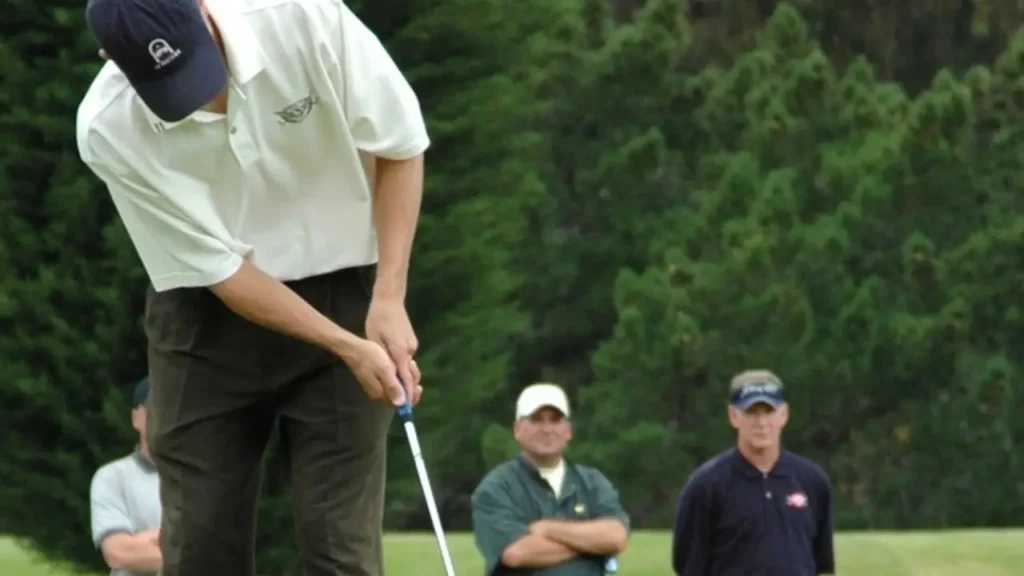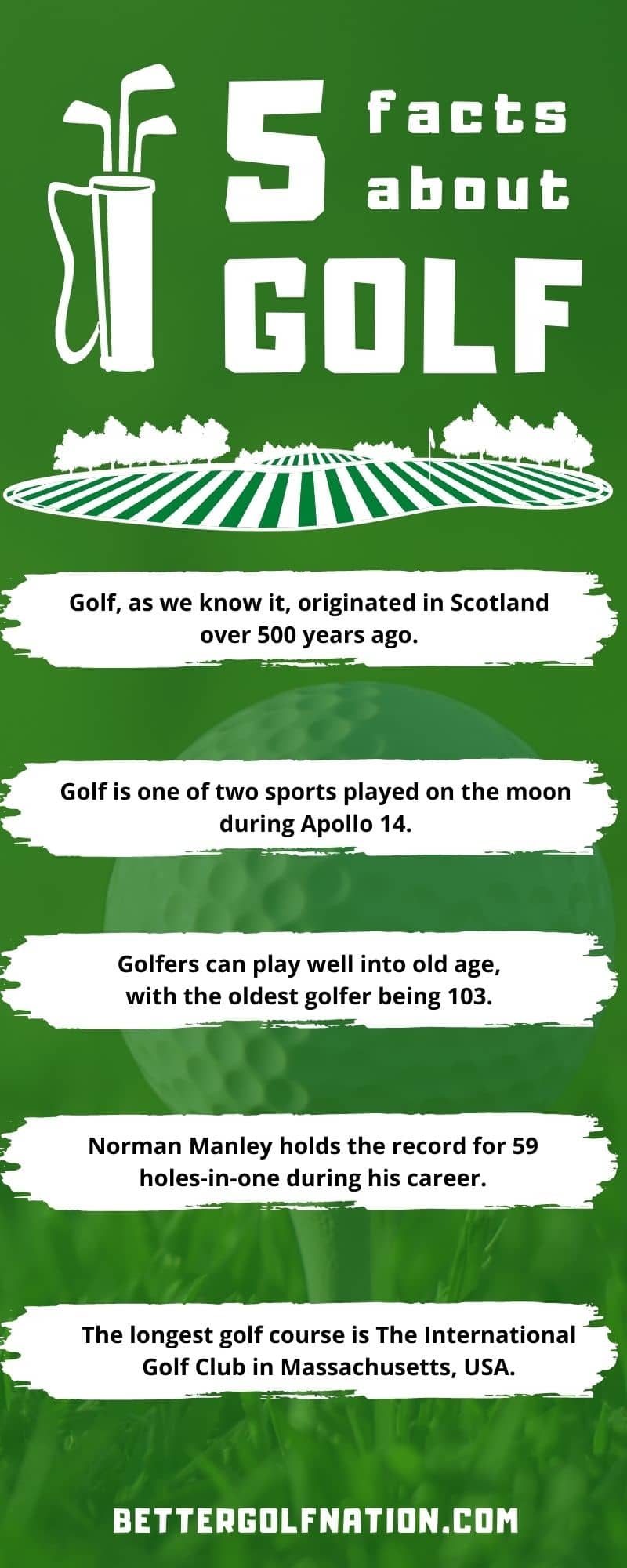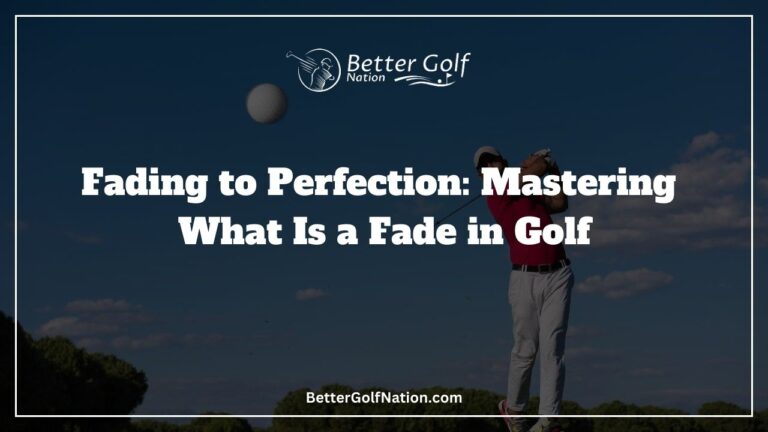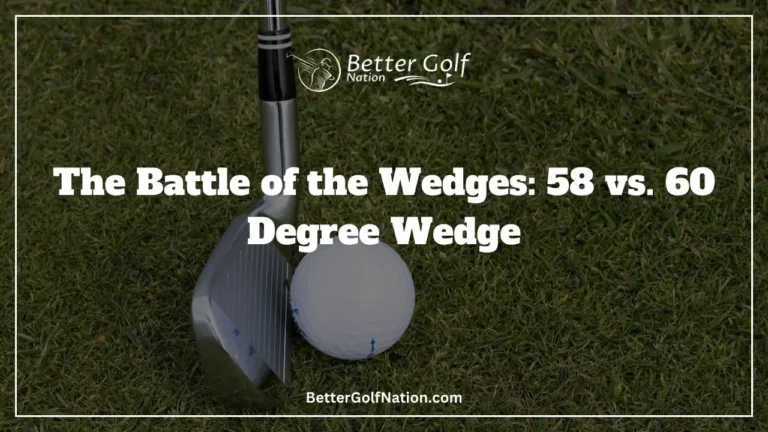Let’s Compare: Average Club Distance By Age
- Last updated on March 5, 2024
- Toni Benedito
- Golf Equipment & Gear, Blog
For male beginners, expect a 200-yard driver and 135-yard 7 iron; females hit 150 yards and 80 yards, respectively. In your 20s, male 5-iron distance is 195 yards; females hit around 160. PGA pros exceed 300 yards (males) and 260 yards (females). Fitness and proper equipment enhance performance. Stay tuned for age-specific insights to boost your golf skills.

Key Takeaways
- Understanding and optimizing your club distances by age can enhance your golf performance. Tailoring equipment, refining technique, and staying fit contribute to increased yardage and accuracy.
- Recognize that as golfers age, swing speed may decrease, impacting club distances. However, with proper equipment and technique, amateur players can still achieve longer shots.
- Club head design, shaft flex, weight distribution, and ball speed significantly influence your average club distance. Custom-fitted clubs, designed for your unique swing, can enhance your overall performance on the course.
- Enhancing strength, flexibility, and mobility through fitness routines positively impacts golf club distances. Regardless of age or gender, engaging in regular exercises, such as weightlifting, contributes to improved performance on the course.
- Achieving longer distances requires time and effort. Focus on gradual improvement, practice with simulators, and stay dedicated to refining your technique. Remember that golf is a challenging sport, and consistent effort leads to success.
Introduction
Whether you’re a seasoned pro or a beginner just learning the ropes, improving your club distance is always a great way to improve your game. But how do you know what a good club distance is for your age?
In this article, we’ll take a look at average club distances by age categories and provide tips on how you can improve your distances. Before we dive into the specifics of club distances by age, it’s important to understand how these measurements are determined.
Many golfers use trackman data to measure their distances, which tracks factors like ball speed, launch angle, and spin rate. This information can help optimize equipment and identify areas for improvement.
So what are the average club distances by age range? Let’s start with beginner golfers.
On average, male beginners can expect their driver to travel about 200 yards, while female beginners will hit around 150 yards. As far as iron play goes, male beginners tend to hit their 7 irons about 135 yards on average, while women typically hit theirs around 80 yards.
Enjoying this article? Read more:
Check out this video below from the Golfing Focus YouTube channel:
Moving up the age categories, those in their 20s tend to hit longer distances than beginners. For example, the average 5-iron distance for men in their 20s is around 195 yards, while women in this age range hit around 160 yards on average.
PGA Tour pros have much higher yardages than amateur players, but even among them, there are gender differences. The average driver’s distance for male pros is over 300 yards, while female pros typically drive around 260 yards.
So what can you do if you’re not hitting these types of yards but still want to improve your game? One thing that might help is optimizing your equipment. Having clubs that fit properly and are suited to your swing speed can make a big difference in overall distance.
Fitness also plays a role in club distance. A golfer with good flexibility and strength will likely hit the ball farther than someone who is out of shape.
So, improving your fitness level can help you add some yards to your shots. In the next section, we’ll take a closer look at average club distances by age category, so you can see how your own game compares.

Understanding Golf Club Distances
When you first start playing golf, one of the first things you need to understand is club distances. Golf club distances can vary greatly depending on different factors, including your age, skill level, and the type of clubs that you are using.
The goal is always to have a consistent and efficient swing with each club to achieve maximum distance. The loft of a golf club plays an important role in determining how far the ball will travel.
Clubs with higher lofts (like a sand wedge) will generate more height and less distance than clubs with lower lofts (like a driver). This is why it’s important to know what distance you can expect from each club in your bag.
Another factor that affects golf club distances is age. As we get older, our bodies tend to lose some of the energy transfer necessary for generating high swing speeds.
This means that older players will typically hit their shots from shorter distances than younger players with similar skill levels. In addition to age and loft, another key factor affecting golf club distances is skill level.
"Understanding golf club distances is key. Factors like age, skill level, and club type affect the game. Consistency in swing, loft importance, and technological aids contribute to informed decisions on the course. Make shots count with knowledge of your club yardages."
Pro golfers can generate much higher swing speeds than beginners, which means they can hit their shots much farther. However, even within the same skill level range, there can be significant variation in terms of average yardage for each club.
To determine your average yardage for each club in your bag, it’s often helpful to use launch monitors or simulators that measure key metrics like swing speed and impact point on the ball. This information can help you identify areas where you might need to work on your technique or consider upgrading your equipment.
For women or players who struggle with generating high swing speeds, hybrid clubs are often recommended, as they tend to generate higher launch angles and longer distances than traditional long irons. On average, hybrid distance tends towards 160–190 yards.
Overall, understanding how different clubs perform under different conditions is crucial when it comes time to make shots on the course. With an understanding of golf club distances, players can make more informed decisions and improve their chances of making successful shots.
Enjoying this article? Read more:

Average Club Distances by Age
As golfers age, their swing speed and overall ability to hit the ball tend to decrease. However, with optimized equipment and proper technique, amateur golfers can still hit longer distances as they get older. Understanding average club distances based on age range can help golfers adjust their game accordingly.
For male golfers in their 20s and 30s, the average distance for a driver is around 290 yards. The average distance for a 6 iron is around 190 yards, while the average distance for an 8 iron is around 160 yards.
As golfers enter their 40s and beyond, these distances may decrease slightly due to decreased swing speed and strength. The average club distances for female golfers tend to be slightly shorter than those of male golfers.
For female amateur golfers in their 20s and 30s, the average driver distance is around 200 yards. The average distance for a pitching wedge is around 80–90 yards, while the average sand wedge distance is around 60–70 yards.
"As golfers age, their swing speed and overall ability to hit the ball tend to decrease. However, with optimized equipment and proper technique, amateur golfers can still hit longer distances as they get older. Understanding average club distances based on age range can help golfers adjust their game accordingly."
However, it’s important to note that these averages are just that—averages. Golf skill level and technique play a significant role in determining club distances.
Players who have better technique may be able to hit longer distances than those who have been playing for years but never focused on improving their form. Additionally, having optimized equipment can have a significant impact on club distances.
Using simulators or launch monitors can help determine which clubs work best for individual players based on factors such as swing speed and launch angle. Incorporating hybrids into the bag can also help increase overall distances while maintaining accuracy.
Understanding how age impacts average club distances can help adjust one’s game plan accordingly. While there may be some decrease in overall yardage as one gets older, properly maintained technique and equipment can still lead to impressive shots off the tee or onto the green.

How to Improve Your Club Distance
Improving your club distance in golf requires a strategic approach, but every golfer has the potential to enhance their yardage on both tee shots and approaches. By focusing on key aspects of your game, from refining your swing technique to optimizing equipment, you can make significant strides in boosting your overall performance.
Work on Swing Technique:- Emphasize good swing mechanics over sheer power.
- Prioritize hip and shoulder rotation, maintaining relaxed arms.
- A smooth, well-sequenced swing facilitates optimal energy transfer for increased ball speeds.
- Consult professional club fitters to find clubs that suit your game.
- Address factors like loft angles and shaft flex that match your swing speed.
- Properly fitted equipment enhances overall performance and contributes to better distance.
- Use trackman data to identify impact points on the clubface.
- Consistent center-face contact leads to higher ball speeds and increased distances.
- Practice with tools like lie boards and impact tape to refine your striking technique.
- Incorporate stretching exercises to improve flexibility in your golf swing.
- Focus on strength training, specifically targeting rotational mobility and power.
- Increased flexibility and strength contribute to enhanced power generation throughout your club set.
Additionally, prioritize physical fitness, integrating stretching exercises and targeted strength training. By embracing these strategies, you can increase your yardage both off the tee and on approach shots, elevating your overall game.
Enjoying this article? Read more:
Check out this video below from Golf Monthly‘s YouTube channel:
The Impact of Equipment on Club Distance
When it comes to hitting the ball farther, having the right equipment can make all the difference.
Golf clubs have come a long way in recent years with advanced materials and technologies that help players hit the ball farther and more accurately. From club head design to shaft flex and weight, here are some ways equipment can impact your club distance.
Club Head Design: The design of the club head can greatly impact your average club distance. The size, shape, and weight distribution of the head can influence how you strike the ball.
For example, a larger head can provide a larger sweet spot for more forgiving hits, while a smaller head may allow for better control over shot shaping. Shaft Flex: The flexibility of your golf clubs’ shafts affects how much power you generate in your swing.
Choosing the right golf equipment is crucial for maximizing distance. From club head design to shaft flex and weight distribution, these factors significantly impact your club distance. Selecting the optimal gear ensures longer and more accurate shots on the course."
Golfers with slower swing speeds will benefit from using a softer flex, while those with faster swing speeds may require stiffer shafts to prevent their shots from going too high or spinning too much. Weight Distribution: The weight distribution of golf clubs can also affect your average club distance.
A heavier head may help you generate more force when swinging, but it might cause you to lose some control over direction. On the other hand, lighter heads allow for greater control but might reduce power.
Ball Speed: One factor that is often overlooked when thinking about equipment is ball speed. The faster the ball travels off of your clubface, the farther it will go downrange.
High-quality balls designed for maximum distance combined with well-fit clubs optimized for your swing speed measurement will produce good results. While equipment alone won’t turn everyone into pro golfers overnight, it’s important to consider these factors when looking to improve your average club distance by age categories or otherwise, as they play an important role in helping golfers hit longer and straighter shots consistently, whether by fairway wood distance or pitching wedge shots around greens.
With today’s simulators and launch monitors, it’s easier than ever to optimize club selection for the average 7-iron distance and the full range of clubs in your bag. Whether you’re a male or female golfer, young or old, getting fit for clubs that suit your swing can help you achieve your goals on the course.
Enjoying this article? Read more:

The Role of Fitness in Golf Club Distance
Improving your fitness is one of the most effective ways to increase your golf club distance. With age, our muscles and joints become weaker, which can affect our overall physical abilities on the golf course.
By establishing an effective fitness routine, you can improve your strength, flexibility, and mobility, all of which are important factors in achieving longer golf shots. Professional golfers know the importance of staying in shape to maintain their performance on the course.
PGA Tour pros regularly engage in strength training, stretching exercises, and other physical activities to stay fit for their tournaments. Age categories do not limit these pros from engaging in these activities.
The average distances for different clubs vary based on individual factors such as ball speed and impact. However, for senior golfers looking to improve their club distance, focusing on improving their strength through exercises like weightlifting or resistance training may be beneficial for increasing distance with every swing.
Ball speed is another crucial factor that determines how far a shot travels. Studies have shown that maintaining a healthy body weight while engaging in regular exercise can help improve ball speed, leading to increased distance with every swing.
Simulators are also an excellent tool for monitoring club distances during practice sessions and identifying areas where you may need improvement. By tracking your average distances with various clubs at different speeds or angles, you can identify areas where you need improvement and develop a plan to improve those aspects.
Improving your fitness can play a significant role in helping you achieve longer golf club distances, regardless of your age range or gender category. Engaging in regular exercise routines like resistance training or weightlifting combined with monitoring progress using simulators will all contribute towards improved performance overall!

Enjoying this article? Read more:
Check out this video below from the Golfing Focus YouTube channel:
Conclusion
Understanding your golf club distances and how they relate to your age and skill level is crucial to improving your game. By knowing what the average distances are for each club, you can work on increasing your distances and achieving greater accuracy on the course.
Remember that equipment plays a big role in club distance, so investing in optimized equipment can also help improve your game. It’s not just about buying the most expensive clubs; it’s about finding ones that are tailored to your specific needs and preferences.
Additionally, fitness can also have a significant impact on club distance. Pro golfers often prioritize fitness and strength training to improve their game, and amateur golfers can benefit from incorporating exercises that target their core, legs, and arms.
While it’s important to know the average distances for each age group and gender, it’s also important not to compare yourself too much to others. Everyone has their own unique skills and abilities when it comes to golfing.
Focus on improving your distances gradually over time. Overall, remember that golf is a challenging sport that requires patience and dedication.
Don’t be discouraged if you don’t see an immediate improvement in your club distances; keep practicing with launch monitors or simulators and focus on getting better with each swing. With enough practice and determination, you may surprise yourself with how far you can hit a 5-iron or fairway wood!
Share this Post
Toni Benedito
Keep Reading
Follow Us
Recent Posts

How Do Pro Golfers Get Paid? The Business of Golf
Professional golfers get paid both before and after tournaments. Before a tournament, they receive appearance fees, sometimes exceeding $1 million, to attract top players. After the tournament, earnings depend on their placement, with the PGA

How Much Do Golf Players And Pros Make? You Won’t Believe It!
Professional golfers earn substantial incomes through tournament winnings, sponsorship deals, and endorsements. Top players on the PGA Tour can make millions annually, with significant earnings from prize money and lucrative brand partnerships. For example, Rory

The Shocking Cost: How Much Does It Cost to Fly with Golf Clubs?
Flying with golf clubs can be a hassle, but it’s worth it for avid golfers. Costs vary by airline, ranging from $30 to $150 per way. Southwest Airlines offers a generous policy, allowing one set

Why Do Golfers Tape Their Fingers Before Hitting the Course?
Golfers tape their fingers to prevent injuries from repetitive motions, provide support for existing injuries, and improve grip comfort. It’s a popular technique among amateurs and pros alike, offering a lightweight and effective solution compared

How Much Does a Round of Golf Cost? Are You on Par?
The cost of a round of golf varies widely based on factors like course type, location, and time of play. Public courses typically range from $30-$100 per round, while exclusive ones like Augusta National or

Hidden Fees: How Much Does It Cost To Rent a Golf Cart
Wondering how much it costs to rent a golf cart? Explore factors like location, rental duration, and cart type impacting prices. Daily rates range from $50 to $80, while weekly rentals can vary from $200
Table of Contents







